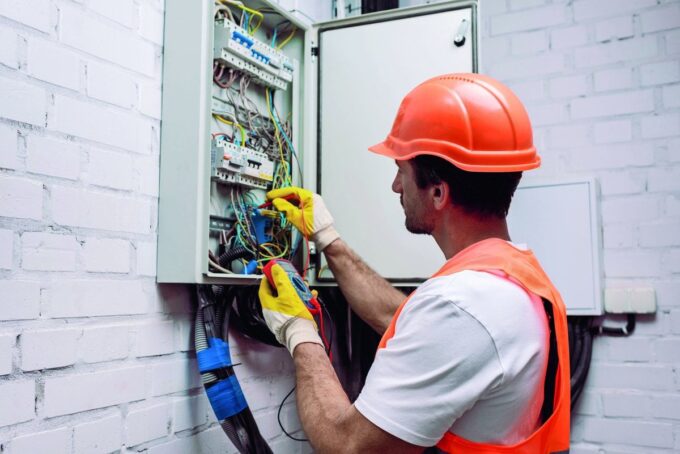Caution electric shock
Electricity is invisible and odorless, its risks are not very obvious. That is what makes it so dangerous. But what actually happens in the body when a person suffers an electric shock?

Around 100,000 full-time employees in Switzerland work in the field of electrical installations. They do this as employees of electricity, electrical installation and electrical control companies, as company electricians in industry and commerce, and as instructors in schools and companies. They know that electricity is very dangerous because it is invisible, noiseless and odorless. If we feel it, it is usually already too late.
The risk of losing one's life in an electrical accident is 50 times higher than in other accidents. Nevertheless, the "5 + 5 vital rules for dealing with electricity" are repeatedly applied only half-heartedly or even ignored - especially when dealing with low voltage. The consequences are fatal: Every year, the Swiss Federal Inspectorate for Heavy Current Installations (Esti) receives around 500 electrical accidents reported. Almost 99 percent of these are occupational accidents, and nine out of ten occur in the supposedly "harmless" low-voltage environment. Between 2007 and 2016, 450 people were seriously injured in occupational electrical accidents. 18 even lost their lives, 14 of them in low-voltage accidents!
When does electricity become dangerous?
The severity of injuries in an electrical accident depends on the current intensity and the exposure time. The current strength results from the voltage and the contact resistance. The latter, in turn, depends on the type of contact surface (clothing, skin thickness and moisture) and the conductivity of the substrate (rubber soles, parquet, moist soil). Therefore, an electrostatic discharge of the carpet is harmless despite 30,000 volts - because the energy is tiny. On the other hand, just approaching a high-voltage device with also 30,000 volts is life-threatening - because a voltage flashover (arc) and thus a high current flow are imminent.
Depending on the individual physiology, the human body resistance is 700 to 1000 ohms. Accordingly, as little as 50 volts is sufficient to cause a life-threatening current of 50 mA (milliamperes) to flow. But even much lower currents of 10 mA or more can be fatal. From this "release limit," muscle spasms triggered by the current tie the victim to the conductor. The duration of exposure increases and with it the severity of the injuries.
When to see the doctor?
Particularly insidious is that the damage provoked by electricity is often not immediately noticeable. Electricity can shift the electrolyte balance, causing the heart's impulse to become increasingly unstable over a period of hours - until it stumbles, fibrillates or stops. Therefore, it is imperative that any person who has been electrocuted be taken to a hospital or doctor - even if they appear to be fine. If the victim complains of palpitations, heart palpitations, shortness of breath or a cramping sensation in the chest after the shock, the emergency services must be called immediately anyway.
Main cause of accidents: rules violated
The main cause of electrical accidents is primarily the disregard of the "5 + 5 vital rules". In addition, there is a lack of technical knowledge, time constraints, distraction, lack of clarity about the condition of an installation, as well as incompetence or the wrong tools. According to Esti statistics, about half of all accidents could have been prevented by consistently following the safety rules for de-energized work. Most electrical accidents in the low-voltage range could be prevented by installing circuit breakers.
Supervisors must exercise their leadership responsibility and consistently enforce that the "5 + 5 rules" are applied without exception - just as much in the training of unskilled workers as of seasoned professionals.
What to do in case of an electrical accident?
- Observe self-protection. The victim may be under power.
- For low voltage (whichever is faster and safer): Remove victim from circuit with non-conductive object (e.g., broom handle, wooden slat) and move out of danger area or interrupt current flow (unplug, remove fuse).
- In case of high voltage: Keep your distance, call emergency services. Any approach is life-threatening until the current is cut off.
- In case of unconsciousness, dizziness, chest pain or rapid heartbeat: Check breathing and heartbeat. In case of cardiac or respiratory arrest, apply artificial respiration and chest compressions immediately and until the arrival of the rescue service.
- In the absence of the above symptoms: Cool any burns and go to hospital.
- In case of secondary injuries (e.g. fractures, bruises): Take immediate measures and consult a doctor
Useful guide









